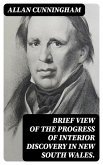In "What Led to the Discovery of the Source of the Nile," John Hanning Speke presents a detailed account of his explorations in East Africa, culminating in his contentious claim to have located the Nile's source at Lake Victoria. Written in a vivid narrative style that blends scientific observation with personal reflection, the book captures the complexities of 19th-century exploration, including the intersections of geography, politics, and cultural encounters. Speke's meticulous documentation of his journeys serves as both an adventure tale and an ethnographic study, providing insights into the landscapes and peoples he encountered, while grappling with the scientific fervor of the era. John Hanning Speke (1827-1864) was a British explorer driven by an insatiable curiosity and a desire to contribute to the age of discovery. His experiences in India and subsequent fascination with African geography fueled his ambition to locate the Nile's source. Speke's pioneering paths were marked by challenges, rivalries, and the weight of imperial expectation, which shaped his narrative as he sought not only geographical truths but also personal recognition. This book is essential for readers interested in exploration, colonial history, and the fervent spirit of inquiry that characterized the Victorian era. Speke's work invites reflection on the interplay between reality and myth in the quest for knowledge, making it a compelling read for historians, adventurers, and literary enthusiasts alike.
Dieser Download kann aus rechtlichen Gründen nur mit Rechnungsadresse in A, B, BG, CY, CZ, D, DK, EW, E, FIN, F, GR, H, IRL, I, LT, L, LR, M, NL, PL, P, R, S, SLO, SK ausgeliefert werden.









